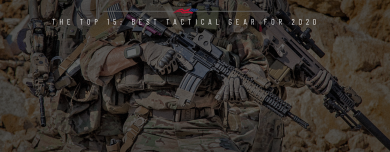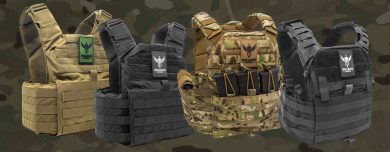
Operational deployments are a fact of military life these days. No matter what trade you’re in, chances are you’re going to find yourself assigned to at least a few months in one of the world’s less scenic trouble spots. The Air Force will make sure you get there, more or less in one piece and on time, and it usually does a pretty good job of moving your gear, too.
The trouble is, there are going to be times you need to haul that gear around yourself, and there can be a lot of it. In addition to your weapons, armor, load bearing equipment, sleeping system and spare uniforms, you need to fit in all the extra items and luxuries you need for up to a year away from home. Sometimes you’ll have access to PX facilities while you’re away; sometimes these will be limited, expensive or nonexistent. You need to be able to carry all you need, and you need to be able to do that in as few pieces of baggage as possible. That’s where a good duffel bag comes in. Yes, you’ll get issued one and it does the job, but it’s possible to find much better ones on the market.
We get asked about choosing the right duffel bag all the time. Here are our thoughts…
What Size Duffel Should You Buy?
The first thing to look for in a deployment bag is size. For a long term deployment, you should be looking for something with a capacity of about 7,000 cu in, or 115 liters. That’s big enough to hold everything you need without it being overpacked. It’s hard to find things in an overstuffed bag without unpacking everything, and there’s also a risk of zippers busting under the strain. That’s the last thing you need during a busy deployment journey!
The Best Duffel Construction
Of course, a big duffel needs to be sturdy, so look for double stitched seams and heavy construction. 600 denier nylon is ideal. You want the seams to be taped and the fabric to be waterproofed, too – it’s not unknown for pallets of gear to get unloaded from an aircraft and left in the rain for an hour or two.
A good deployment bag also needs to be easy to carry. If you find yourself stuck somewhere like Bagram for three days while you try to get a flight, you’ll soon find out why. Two or three times a day, you’ll have to haul all your gear between the flight center and transit accommodation, and that can be up to half a mile over rutted, muddy roads.
If you can rely on having hard surfaces, something like the Mercury Luggage Code Alpha wheeled deployment bag is ideal – with 80 pounds of gear stuffed in there it’s much easier to pull it than carry it. Somewhere more basic, like Camp Leatherneck, can get pretty dirty though so shoulder straps are probably a better option. A lot of bags have hideaway shoulder straps you can secure under Velcro flaps, and that’s a great feature. In fact, the less clutter on the outside of the bag the better; it’s less likely to get caught on pallets, truck seats or aircraft fittings, and that helps prevent it getting ripped open as it’s being handled.
Other Duffel Bag Features You Want
There are a few other features to look for, too. A couple of external pockets are handy; they let you store movement documents and small items you want to get at in a hurry without having to rummage through a stack of T-shirts and socks. A clear plastic sleeve to hold a name card is also great. When you’re trying to find your bag from a pile of a few dozen very similar ones, that really helps! Velcro for name tags can also help, but they’re more likely to get ripped off in transit. Loops so you can padlock the zip help prevent casual thefts, and reinforced corners cut down on wear and tear.
Whatever type of duffel bag you go for, don’t cut corners. A cheap one might seem like a good deal but it’s a lot more likely to burst its zip or split a seam when you’re rushing to get on a plane. Arriving in theater with your gear stuffed into a couple of disintegrating Hefty bags isn’t fun, and it’s also pretty embarrassing. Choose a good bag, pay for quality, and you’ll get your money’s worth.







